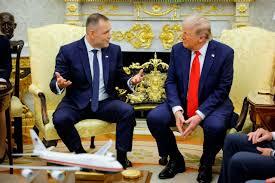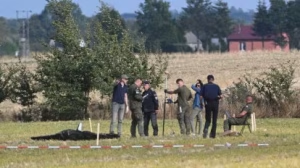The Poland Russia conflict reached a dangerous new threshold as Poland became the first NATO country to actively engage Russian military assets during the Ukraine war. Russian drones violated Polish airspace, prompting Warsaw to scramble fighter jets and activate air defense systems to shoot down the intrusions. This unprecedented escalation in the Poland Russia conflict has triggered emergency consultations within NATO and raised serious questions about potential Article 4 or Article 5 responses.

Polish Prime Minister Donald Tusk called an emergency government meeting to address what officials termed an “act of aggression,” marking the most serious direct confrontation in the Poland Russia conflict since World War II. The incident demonstrates how the Ukraine war continues to spill over into NATO territory, creating risks of broader European involvement.
Airport Closures and Military Response
Four major Polish airports, including Warsaw’s Chopin Airport, Rzeszów–Jasionka, Warsaw Modlin, and Lublin, were temporarily closed due to “unplanned military activity related to ensuring state security.” The Poland Russia conflict escalation forced authorities to implement unprecedented security measures as Polish and allied aircraft operated in national airspace while ground-based air defense systems reached maximum readiness levels.
The Polish military confirmed that both national and NATO allied aircraft were airborne to protect Polish skies during the Poland Russia conflict incident. Ground-based air defense and radar reconnaissance systems were placed on the “highest state of readiness” to track and respond to potential additional drone incursions from Russian forces.
Trump’s Reaction and International Response


US President Donald Trump reacted to the Poland Russia conflict escalation with characteristic directness, stating “Here we go” in response to reports of Russian drone violations of Polish airspace. Trump’s reaction reflects growing American concern about the potential for NATO involvement as the Ukraine conflict expands beyond Ukrainian borders.
The Poland Russia conflict has prompted widespread international condemnation, with the UK Prime Minister calling Russia’s violation of Polish airspace “extremely reckless.” France, UK, and Hungary have all condemned the Russian drone incursion, while EU defense chief has called for developing a “drone wall” along nations bordering Russia to prevent future incidents.
NATO Article 4 Consultations Triggered


The Poland Russia conflict incident has prompted NATO to schedule emergency council meetings to discuss the drone intrusions under Article 4, which allows members to request consultations when they feel their security is threatened. NATO officials stated they responded “quickly and decisively” to the drone violations, though they stopped short of invoking Article 5, which would trigger collective defense obligations.
Czech Prime Minister described the Poland Russia conflict escalation as a “test of NATO,” highlighting the alliance’s need to demonstrate unity and resolve in response to direct attacks on member territory. The incident represents the most serious challenge to NATO’s eastern flank since the alliance’s expansion.
Russian Denial and Diplomatic Tensions
Russia’s defense ministry denied intentionally targeting Polish territory during the Poland Russia conflict, claiming overnight strikes focused solely on Ukraine’s military-industrial complex. Moscow offered to hold consultations with Poland’s Ministry of Defense while dismissing Polish accusations as “groundless” and demanding proof that the drones were Russian.
Also Read: Charlie Kirk News Updates: Powerful Trump Ally Shot Dead at Utah Event
The Poland Russia conflict has intensified diplomatic tensions, with Russia’s top diplomat in Poland summoned over the drone incident. Moscow accused Poland of spreading “myths” about drone intrusions, while Polish officials maintained that the violations were not accidental but deliberate provocations.
Debris Evidence and Investigation

Polish police discovered debris from damaged Russian drones in the eastern Lublin region, providing physical evidence of the Poland Russia conflict escalation. The discovery supports Polish claims about drone incursions and undermines Russian denials about targeting Polish territory.
Ukrainian air force officials confirmed that Russian drones had entered Polish airspace, flying westward toward the city of Zamosc. This marked the first such direct threat to Poland in weeks and the most serious Poland Russia conflict incident since the Ukraine war began.
Presidential Warnings and Security Concerns
Polish President Karol Nawrocki had warned just days before the Poland Russia conflict escalation that Russia could attempt further invasions beyond Ukraine. Speaking at a press conference in Helsinki, Nawrocki stated that Poland does not trust Vladimir Putin’s good intentions and believes Russia is prepared to invade other countries.
The Poland Russia conflict concerns align with similar warnings from German Chancellor Friedrich Merz, who cautioned that Putin’s “imperialist plan wouldn’t end with the conquest of Ukraine.” These statements demonstrate growing European recognition of Russian expansionist threats.
Military Preparedness and Allied Support
The Poland Russia conflict has highlighted Poland’s military preparedness, with the country hosting over a million Ukrainian refugees while maintaining robust defense capabilities. President Trump recently pledged additional American troops to Poland during Nawrocki’s White House visit, demonstrating strengthened NATO support for frontline states.
Poland’s Territorial Army reduced reporting times amid airspace violations, while military officials warned of ongoing operations in the “most endangered regions.” The Poland Russia conflict has placed Polish forces on their highest alert level since the Ukraine war began, with continuous monitoring of potential Russian threats along the border.
Future Implications and Regional Security
The Poland Russia conflict escalation represents a critical test of NATO’s collective defense mechanisms and European security architecture. As the first direct military engagement between a NATO member and Russian forces, this incident establishes dangerous precedents for potential future confrontations and highlights the urgent need for enhanced regional defense coordination.

